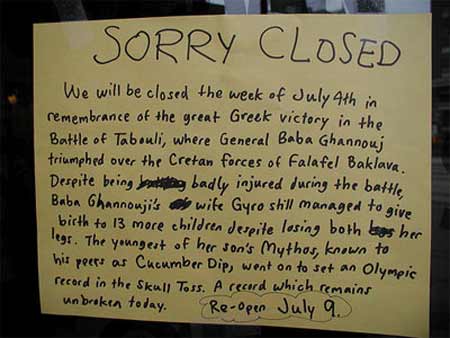
Frowning takes 68 muscles.
Smiling takes 6.
Pulling this trigger takes 2.
I'm lazy.
Posted on 12/02/2010 11:58:04 AM PST by decimon

Was that an “Oasis” joke?

After a couple of burritos I can do that, too.
I recall seeing one of these in a dark dorm room caused by a drunk sophomore and a Bic lighter. It was spectacular.
Complete and total BS.
I think tt was actually two subcritical masses of U235. When put together they were barely critical (takes supercritical to explode). I read about it in The Making of the Atomic Bomb by Richard Rhodes. Excellant book...highly recommended.
It went supercritical. Supercritical just means that the 'power' is increasing. Critical means that the chain reaction is self-sustaining in a steady-state condition. To increase power, you 'go super-critical', to decrease power you 'go sub-critical'. Nuclear power plants go 'super-critical' every day.
The fission produces prompt (from the fission itself) and delayed (from the decay of the fission products) neutrons. In a controllable system, the delayed neutrons are needed for self-sustaining reaction. Since these neutrons are delayed, it gives us the ability to control the power.
If too much reactivity is added, the system can become critical without the need for the delayed neutrons and becomes uncontrollable, this is referred to prompt-critical or prompt-supercritical if the reaction rate is increasing only on prompt neutrons. Typically, the heat generated will cause a conventional explosion destroying the reactor.
In an atomic bomb, the reactivity is added so quickly, that the power increase is extremely large and at such a quick rate that kilo-tons or mega-tons of energy are created before the bomb self-destructs.
Researching this book, he had access to the Russian archives and the Russian bomb scientists still living after the fall of the USSR.
Imagine the shock of being near one of those experiments-gone-wrong, and seeing the flash of blue glow in the air.
And then just an instant later knowing what it meant.
And then having the state-of-mind to remove the relector thus reducing the radiation to a safe level.
I think tt was actually two subcritical masses of U235.
Two accidents. Both were with plutonium spheres but only the second was with beryllium reflector.
In both cases the reflector was 'carefully' added around the plutonium till it became critical except when it came to the last piece, it was accidentally dropped.
The lab guys were honest about what they were doing: Trying to see what happens to the explosion as it expands from the star core through the denser star material in a Type 1A Supernova.
In their case, they substituted chemical reactions and viscous material.
I probably loses something in the translation with Earth's gravity being a major force...

Looks like that Supernova went critical and detonated.
There are no stars the size that would fit in a jar.
***A black hole would fit. And that’s a collapsed star.
Thanks. It’s been a few years since I did any reading on the subject and my memory of the terminology is fuzzy.
IIRC, a supernova occurs when the iron (a product of other fusion reactions) in a star’s core tries to fuse. Ain’t no way they simulate that.
All they did was make a nice model of some shock waves.
Disclaimer: Opinions posted on Free Republic are those of the individual posters and do not necessarily represent the opinion of Free Republic or its management. All materials posted herein are protected by copyright law and the exemption for fair use of copyrighted works.